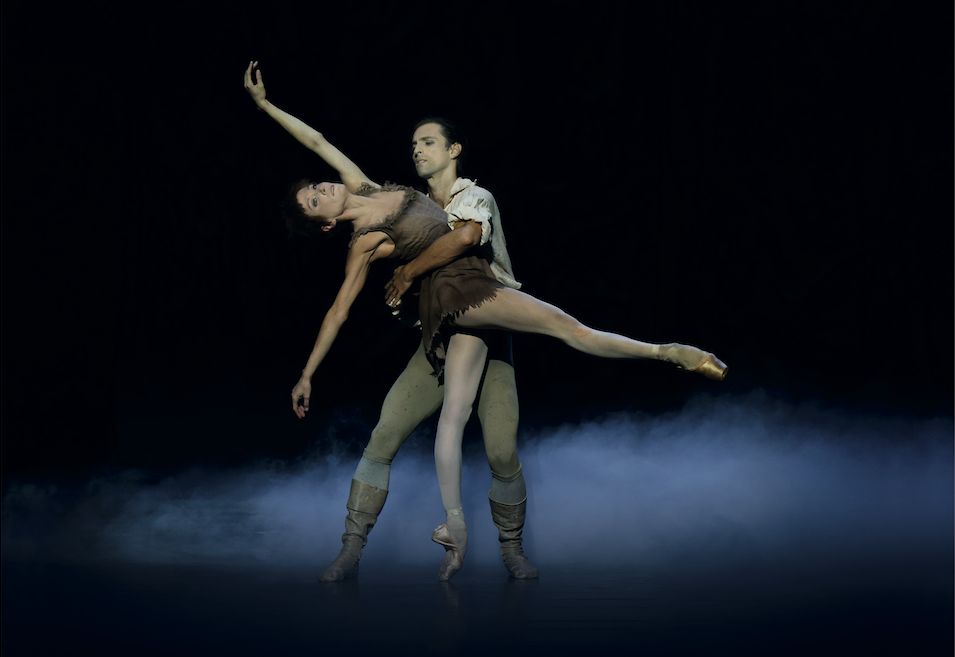
Manon Lescaut, a timeless icon of French literature, transcends time and is deeply rooted in her country's cultural heritage. Her story, penned by Abbé Prévost in the 18th century and magnified in Jules Massenet's 19th-century opera, continues to inspire admiration and emotion. But it was perhaps in the world of ballet that its story was to be fully illustrated, taking on a symbolic character and relevance that go beyond the limits of the original story.
Adapted for the choreographic stage in 1974 by British choreographer Kenneth McMillan, L'Histoire de Manon quickly became a benchmark in the Paris Opera Ballet repertoire. In this artistic exploration, the French dancers present us with a skillful rendition, in which each artist delicately and intelligently embodies the intricacies and unspoken nuances of the characters.
Manon, a playful young woman craving pleasure, witnesses her fate transform upon encountering the Chevalier Des Grieux in the vibrant streets of Paris. Despite her being destined for convent life, their intense love compels her to run away with him. However, Manon's brother swiftly intervenes, offering her a life of opulence by becoming the mistress of the wealthy Monsieur de G...M.... Yielding to pressure, Manon accepts, but when Des Grieux reenters her life, she once again surrenders to his love. To overcome their financial struggles, the trio resorts to card cheating to swindle money from Monsieur de G...M.... Although their escape appears successful at first, Lescaut, Manon's brother, is arrested, leading to Manon's conviction for prostitution. As she is being deported to New Orleans, Des Grieux follows her, and amidst a final tumultuous event, she ultimately succumbs on the banks of the mighty river Mississippi.
The tale of Manon has undergone numerous adaptations throughout the centuries, with one of the most renowned by composer Jules Massenet in the late 19th century. While Prévost approached it with a moralistic lens, delving into the excesses of Louis XV-style libertinism, Massenet, inspired by fin-de-siècle naturalism, envisioned Manon as a vibrant portrait of the contrasting society in 18th-century Paris. MacMillan's ballet shares this social awareness with Massenet's opera, shedding light on the class inequalities influencing the characters' actions. The opulent sets and costumes, reminiscent of 18th-century Paris, resonate with concerns and dilemmas that persist in contemporary society.
Although MacMillan doesn't incorporate Massenet's opera directly into his ballet, the composer's music remains a powerful presence, accompanying key moments in the plot. Notably, the exquisite melody of Elégie enriches the expressions of love between Manon and Des Grieux, Crépuscule provides solace to the heroine's moments of uncertainty and solitude, and the ballet music from the opera Cléopâtre punctuates the entrances of Lescaut and his dapper mistress.
The narrative of Manon Lescaut finds its eloquent expression in the realm of ballet, where bodies communicate without the need for words. The pas de deux between Manon and Des Grieux encapsulates the magnetic pull of destinies intertwined. MacMillan uses choreography to depict Manon's inextricable reliance on men, a deliberate choice never to have her dance alone, underscoring her interdependence with the men in her orbit. Drawing on choreographic references, such as the Rose Adagio in Tchaikovsky & Petipa’s Sleeping Beauty, MacMillan highlights the heroine's constrained agency in a male-dominated world.
MacMillan's distinctive choreographic style, melding neoclassicism with realism, provides a captivating lens into often somber themes. He delves into subjects of women's autonomy, financial dependency, and the struggle against precarious circumstances. In pushing the boundaries of movement to the edge, MacMillan's expressive choices infuse the story with poignant realism, adding depth to the emotional tapestry of the narrative.
In spite of its detour through England, L’Histoire de Manon, performed by the Paris Opera Ballet, is truly a masterpiece of French culture, a living work of art that transcends time and space. In each arabesque and each plié, the story of Manon Lescaut takes on a new dimension, claiming its rightful place as a cornerstone in France's rich artistic heritage and affirming its status as a universal story.